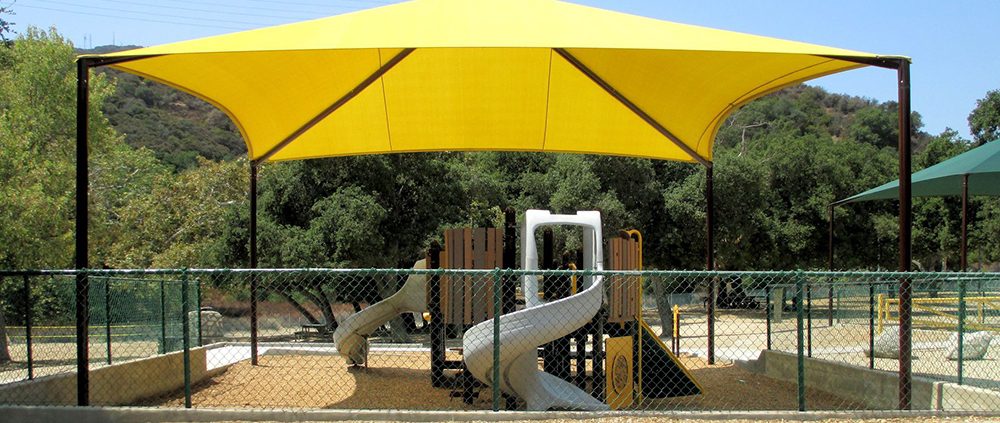3 Main Differences Between Awnings and Canopies: Choosing the Right Shade Solution
When it comes to providing shade and shelter to outdoor spaces or the exterior of buildings, two popular options are awnings and canopies. While both serve similar purposes, they have distinct differences that can significantly impact their functionality and aesthetics. In this article, we’ll explore the three main differences between awnings and canopies, helping you make an informed choice for your specific needs.
- Attachment and Installation
One of the primary differences between awnings and canopies is how they are attached and installed.
Awnings:
Awnings are typically attached directly to a building’s exterior. They can be mounted above windows, doors, or along the façade to provide shade and protection from the sun and elements. The attachment points are secure and fixed, ensuring stability and durability. Awnings can be either retractable or stationary.
- Retractable Awnings: These can be extended or retracted as needed. They offer flexibility in adjusting the amount of shade and can be controlled manually or motorized for convenience. Retractable awnings are ideal for spaces where you want to have the option of full sun or shade.
- Stationary Awnings: Stationary awnings are permanently affixed to the building and do not have the retractable feature. They provide continuous shade and are known for their durability and long-lasting performance.
Canopies:
Canopies, on the other hand, are freestanding structures that are not attached to a building. They consist of a frame structure with a fabric or solid roof and are supported by posts or columns. Canopies are self-contained units and can be placed anywhere in an outdoor space.
- Gazebo Canopies: These are often used in gardens or parks and are designed to provide a shaded area for relaxation or social gatherings. They are open-sided structures with a roof.
- Patio Canopies: Patio canopies are larger structures designed to cover outdoor seating areas, dining spaces, or even hot tubs. They are typically made of durable materials and come in various styles.
The key difference here is that awnings are directly attached to a building, while canopies are standalone structures that do not require attachment to a structure.
- Portability and Flexibility
Another significant difference between awnings and canopies is their portability and flexibility.
Awnings:
Awnings, especially retractable ones, offer a high degree of flexibility. You can extend or retract them as needed, giving you control over the amount of shade and sunlight in your outdoor space. This flexibility makes them an excellent choice for spaces where you want the option of an open or shaded area.
However, stationary awnings, while durable and stable, do not provide the same level of flexibility as retractable ones. Once installed, they remain in place and provide continuous shade.
Canopies:
Canopies are highly portable and versatile. You can place them wherever you need shade, and they are not limited by the proximity to a building. This flexibility is particularly advantageous for outdoor events, picnics, or gatherings where you need temporary shelter.
While canopies can be disassembled and moved, they do require a more extensive setup process compared to retractable awnings. They are designed to be semi-permanent or temporary structures rather than a permanent shade solution for a building.
- Size and Coverage
The size and coverage provided by awnings and canopies also differ significantly.
Awnings:
Awnings are typically designed to cover specific areas, such as windows, doors, or outdoor seating sections. They provide localized shade and protection, making them suitable for smaller spaces or specific zones that require shading.
The size of an awning is determined by its intended purpose and the area it needs to cover. While retractable awnings can span a more extensive area when extended, they are still limited to the size of the building’s exterior or the designated installation location.
Canopies:
Canopies, by nature, are designed to cover larger areas. They can span a significant outdoor space, providing shade and shelter to a broader area compared to awnings. Canopies are available in various sizes, from compact gazebo canopies to expansive patio canopies.
The flexibility in size and coverage makes canopies an excellent choice for outdoor events, larger seating areas, or spaces where you need to provide shade and shelter to a group of people.
Conclusion
Choosing between awnings and canopies depends on your specific needs, preferences, and the intended use of the shade solution. Awnings are ideal for providing shade and protection in a fixed, permanent location, such as above windows or outdoor seating areas. They offer flexibility through retractable options but are limited to the building’s architecture.
On the other hand, canopies are highly flexible, portable, and capable of covering larger areas. They are excellent for temporary shade needs, outdoor events, and creating standalone shaded zones in open spaces.
Ultimately, the decision between awnings and canopies should align with your goals, whether it’s enhancing the aesthetics of your building, creating a comfortable outdoor seating area, or providing temporary shelter for various activities. Consider the attachment and installation requirements, flexibility, and coverage area to determine which shade solution best suits your needs.





